
February, 1853.
The Seer was an official periodical of the Church of Jesus Christ of Latter-day Saints (LDS Church) which first appeared in 1853 and was published throughout 1854. [1]

The Seer was an official periodical of the Church of Jesus Christ of Latter-day Saints (LDS Church) which first appeared in 1853 and was published throughout 1854. [1]
After the LDS Church publicly acknowledged that it was teaching and practicing plural marriage at its September 1852 conference, LDS Church president Brigham Young dispatched apostle Orson Pratt to Washington, D.C., where he was asked to publish an apologetic magazine targeted at non-Mormons. The primary purpose of the magazine would be to explain and defend the principles of Mormonism.
The first edition of The Seer was published in January 1853, with future editions being produced monthly. The contents of The Seer were composed almost entirely of original writings by Pratt. Throughout its publication history, the majority of Pratt's writing stressed the rationality of the doctrine of plural marriage. [2] For example, Pratt dedicated 107 of the 192 total pages of The Seer to a twelve-part exposition on what he called celestial marriage.
The Seer was published in Washington, D.C., until July 1854, when publication was shifted to Liverpool, England. After only 18 issues, Pratt was forced to cease publication due to mounting financial losses. Circulation peaked at 400 copies in late 1853. "The world will not subscribe for nor read The Seer," [3] Pratt lamented to his brother Parley.
In 1865, a majority of the First Presidency and the Quorum of the Twelve Apostles of the LDS Church officially condemned some of Pratt's doctrinal declarations contained in The Seer:
"The Seer [and other writings by Pratt] contain doctrines which we cannot sanction, and which we have felt impressed to disown, so that the Saints who now live, and who may live hereafter, may not be misled by our silence, or be left to misinterpret it. Where these objectionable works, or parts of works, are bound in volumes, or otherwise, they should be cut out and destroyed." [4]
Despite the failure of The Seer and the controversy that resulted from some of its contents, many of the traditional explanations and justifications for Mormon polygamy had their beginning in Pratt's writings in the magazine.

Polygamy was practiced by leaders of the Church of Jesus Christ of Latter-day Saints for more than half of the 19th century, and practiced publicly from 1852 to 1890 by between 20 and 30 percent of Latter-day Saint families.
The Adam–God doctrine was a theological idea taught in mid-19th century Mormonism by Brigham Young, a president of the Church of Jesus Christ of Latter-day Saints. Although the doctrine is rejected by the LDS Church today, it is still an accepted part of the modern theology of some Mormon fundamentalists.

John Taylor was an English-born religious leader who served as the third president of the Church of Jesus Christ of Latter-day Saints from 1880 to 1887. He is the first and so far only president of the LDS Church to have been born outside the United States.
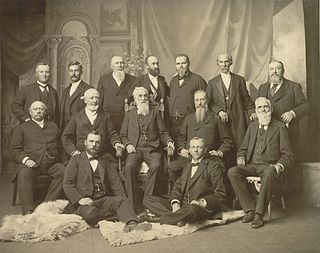
In the Church of Jesus Christ of Latter-day Saints, the Quorum of the Twelve Apostles is one of the governing bodies in the church hierarchy. Members of the Quorum of the Twelve Apostles are apostles, with the calling to be prophets, seers, and revelators, evangelical ambassadors, and special witnesses of Jesus Christ.
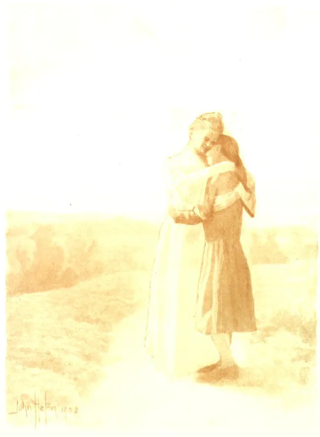
In the Latter Day Saint movement, Heavenly Mother or the Mother in Heaven is the mother of human spirits and the wife of God the Father. Collectively Heavenly Mother and Father are called Heavenly Parents. Those who accept the Mother in Heaven doctrine trace its origins to Joseph Smith, founder of the Latter Day Saint movement. The doctrine became more widely known after Smith's death in 1844.

Lorenzo Snow was an American religious leader who served as the fifth president of the Church of Jesus Christ of Latter-day Saints from 1898 until his death. Snow was the last president of the LDS Church in the 19th century and the first in the 20th.
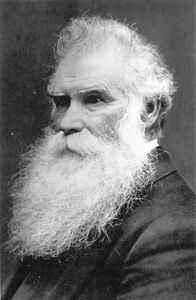
Orson Pratt Sr. was an American religious leader and mathematician who was an original member of the Quorum of the Twelve Apostles of the Church of Christ. He became a member of the Quorum of the Twelve of the Church of Jesus Christ of Latter-day Saints and was a leading Mormon theologian and writer until his death.

Orson Ferguson Whitney, born in Salt Lake City, Utah Territory, was a member of the Quorum of the Twelve Apostles of the Church of Jesus Christ of Latter-day Saints from 1906 until his death.
Richard Roswell Lyman was an American engineer and religious leader who was an apostle in the Church of Jesus Christ of Latter-day Saints from 1918 to 1943.

Orson Hyde was a leader in the early Latter Day Saint movement and a member of the first Quorum of the Twelve Apostles. He was the President of the Quorum of the Twelve Apostles of the Church of Jesus Christ of Latter-day Saints from 1847 to 1875 and was a missionary of the LDS Church in the United States, Europe, and the Ottoman Empire.
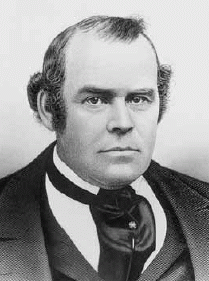
Parley Parker Pratt Sr. was an early leader of the Latter Day Saint movement whose writings became a significant early nineteenth-century exposition of the Latter Day Saint faith. Named in 1835 as one of the first members of the Quorum of the Twelve Apostles, Pratt was part of the Quorum's successful mission to Great Britain from 1839 to 1841. Pratt has been called "the Apostle Paul of Mormonism" for his promotion of distinctive Mormon doctrines.
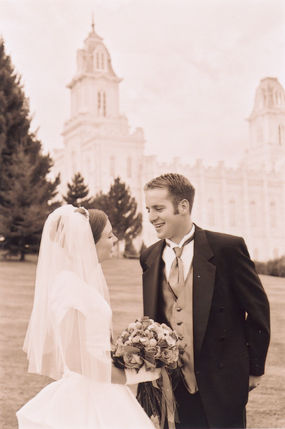
Celestial marriage is a doctrine that marriage can last forever in heaven. This is a unique teaching of the Church of Jesus Christ of Latter-day Saints or Mormonism, and branches of Mormon fundamentalism.

Polygamy in the Church of Jesus Christ of Latter Day Saints, or plural marriage, is generally believed to have originated with the founder of Mormonism, Joseph Smith. According to several of his associates, Smith taught that polygamy was a divine commandment and practiced it personally, by some accounts marrying more than 30 women, some of whom had existing marriages to other men. Evidence for Smith's polygamy is provided by the church's "sealing" records, affidavits, letters, journals, and diaries. However, until his death, Smith and the leading church quorums denied that he preached or practiced polygamy. Smith's son Joseph Smith III, his widow Emma Smith, and the Reorganized Church of Jesus Christ of Latter Day Saints challenged the evidence and taught that Joseph Smith had opposed polygamy. They instead claimed that Brigham Young, the head of the Church of Jesus Christ of Latter-day Saints, introduced plural marriage after Smith's death. In 1852, leaders of the Utah-based LDS Church publicly announced the doctrine of polygamy.
Mormon theology has long been thought to be one of the causes of the Mountain Meadows Massacre. The victims of the massacre, known as the Baker–Fancher party, were passing through the Utah Territory to California in 1857. For the decade prior the emigrants' arrival, Utah Territory had existed as a theocracy led by Brigham Young. As part of Young's vision of a pre-millennial "Kingdom of God," Young established colonies along the California and Old Spanish Trails, where Mormon officials governed as leaders of church, state, and military. Two of the southernmost establishments were Parowan and Cedar City, led respectively by Stake Presidents William H. Dame and Isaac C. Haight. Haight and Dame were, in addition, the senior regional military leaders of the Mormon militia. During the period just before the massacre, known as the Mormon Reformation, Mormon teachings were dramatic and strident. The religion had undergone a period of intense persecution in the American mid-west.
Warner "William" McCary was an African American convert to Mormonism who was excommunicated from the Church of Jesus Christ of Latter-day Saints in 1847 for claiming to be a prophet. Some researchers have suggested that McCary's actions led to the Church's subsequent policy of not allowing people of black African descent to hold the priesthood or participate in temple ordinances.
The Church of Jesus Christ (Bickertonite) is part of the Latter Day Saint movement. When Joseph Smith, the founder of the movement, died there was a dispute regarding who should lead the church as his successor. The Quorum of the Twelve, led by Brigham Young, argued that they should have the right to lead the church while one of the church leaders, Sidney Rigdon, argued that he should act as protector of the church until a permanent leader was chosen. Those who followed Rigdon formed the "Church of Christ" with its center being Pittsburgh, Pennsylvania. After an attempt to start a communitarian society, Church of Christ broke apart by 1847. William Bickerton associated himself for two years with the Church of Jesus Christ of Latter-day Saints and later left them behind refusing to accept some of their beliefs, including polygamy. In the 1850s Bickerton's preaching led to the formation of a new church in Eastern Pennsylvania. Over the following years Bickerton's church faced two schisms related to doctrinal issues. Its current official name, The Church of Jesus Christ, was adopted by 1941.

The following outline is provided as an overview of and a topical guide to the Church of Jesus Christ of Latter-day Saints.
Apostolic succession in the Church of Jesus Christ of Latter-day Saints is the process of transition to a new church president when the preceding one has died.